We are happy to present a new CAD Exchanger release, which is strengthening its capacity across CAD formats, covering new extensions and more data contained therein.
Here are the highlights of CAD Exchanger 3.10.1
- Autodesk Inventor import
- SOLIDWORKS user-defined and validation properties import
- IFC Global IDs import
- Non-Unicode strings import
- Improved spherical faces support in IGES and Parasolid
- Visualization toolkit usability improvement
Autodesk Inventor import
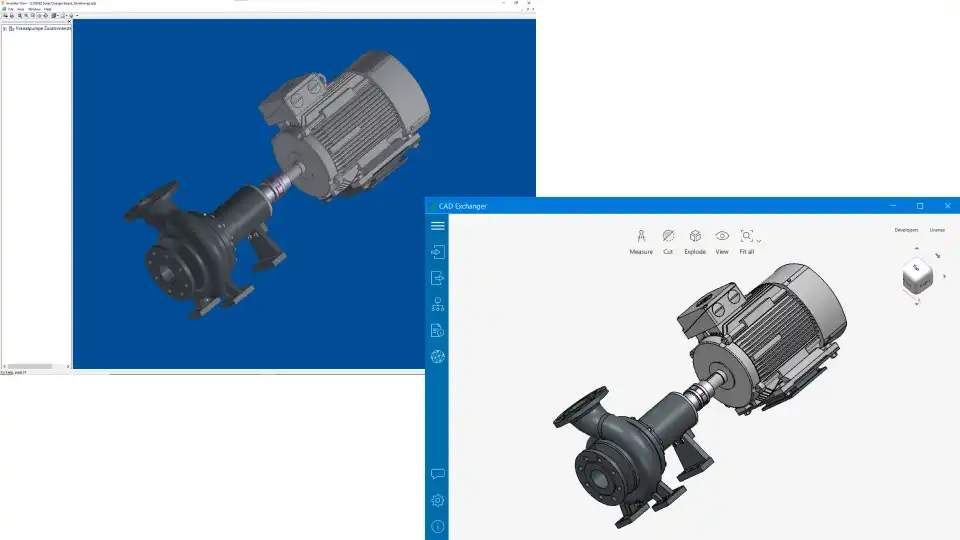
Autodesk Inventor is one of the key CAD packages which competes directly with such other giants as PTC Creo, AutoCAD, Solid Edge, and Solidworks. It’s widely used for industrial equipment and machinery design, providing a broad range of tools for design automation, tooling creation, customizing BOM, engineering analysis, rendering, and collaboration. Parts and assemblies created with Autodesk Inventor are saved with IPT and IAM file extensions correspondingly.
Having 7 native formats in its pocket, CAD Exchanger covered almost all the most common CAD formats, and Autodesk Inventor was the most prominent omission. Since version 3.10.1 the matter is closed: both extensions (.ipt, .iam) in versions 2015 - 2021 can now be imported, preserving B-Rep geometry, colors, names, and assembly structure.
SOLIDWORKS user-defined and validation properties import

Apart from geometrical and topological data, visual attributes, and PMI, models are often accompanied by metadata. These properties can specify any information meaningful for product identification or its further processing: author details, modification date, material properties, revision number, etc. CAD Exchanger 3.10.1 enables reading metadata from SOLIDWORKS files.
What’s more, with a new release it is possible to verify the correctness of the file conversion with the validation properties. CAD Exchanger imports values of volume, area, center of gravity, and bounding box from the SOLIDWORKS file. Then they can be compared with values computed from the resulting 3D model to ensure that the import was successful.
Non-Unicode strings import
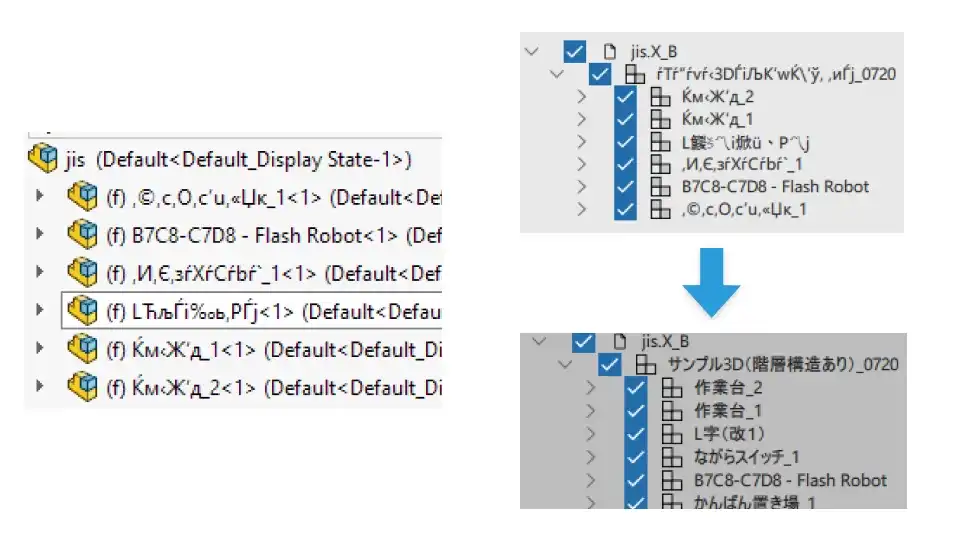
CAD Exchanger is used globally to read models created all around the world, so we often encounter non-ASCII characters in the text inside the models. These characters are encoded in a variety of regional encodings (Windows-1252, GB2312, etc.), effectively in violation of the format specifications, most of which mandate a specific encoding (UTF-8 or ANSI). The models also usually don't specify the encoding they use. All of this resulted in the text often being imported incorrectly by CAD Exchanger.
CAD Exchanger 3.10.1 is now equipped with an algorithm, which recognizes a model's encoding and restores proper characters in IFC, ACIS, STEP, and Parasolid (also affects JT, NX, SOLIDWORKS) formats. Wherever your customer and partners are, whichever language they speak, it isn’t an obstacle for sharing 3D data and collaborating on it.
Improved spherical faces support in IGES and Parasolid
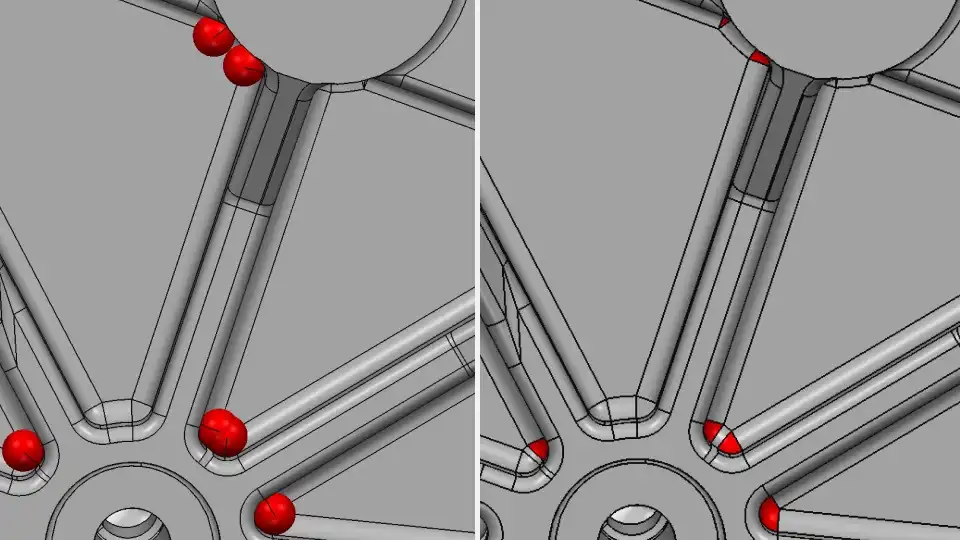
CAD Exchanger geometry model requires that face boundaries represent closed contours in 3D and 2D space, while IGES and Parasolid impose restrictions only on 3D. During file import, this may result in incorrectly trimmed spherical faces. In version 3.10.1, IGES and Parasolid importers' healing capabilities were improved to ensure proper representation of spherical faces. Please note, that enhancements regarding Parasolid also affect JT, NX, and SOLIDWORKS conversion.
Broader versions coverage of CATIA, DWG, and Siemens NX
To ensure better formats compatibility CAD Exchanger scope was extended to support more formats versions: import of CATIA V5R16, V5R17, and V5R30, DWG 2010, NX 1926 Series, 1953 Series, and 1980 Series.
CAD Exchanger SDK enhancements
IFC Global IDs import
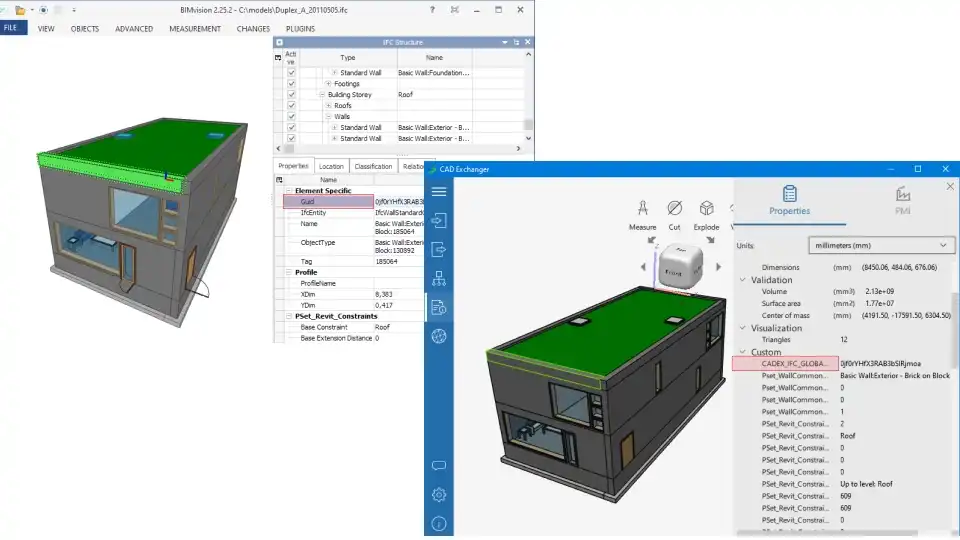
IFC's Global ID is a unique identifier of a building element (slab, beam, wall, door, window, etc.) within an IFC file. This attribute makes it possible to find the elements in the assembly structure. This is particularly relevant for BIM/AEC applications, which routinely manage rich sets of metadata that pertains to the building elements.
CAD Exchanger now allows importing Global ID attributes and storing them in its neutral data model when reading IFC files. This makes it possible for client applications to identify building elements, map them to datasets external to IFC and run BIM-specific workflows. The Global IDs can also be retained when converting IFC models to other formats, and transmitting them to other software tools. Below is the code snippet showing how to use this new functionality:
IFC_Reader aReader;
aReader.Parameters().ReadGlobalIDs() = true;
aReader.Read ("file_path");
ModelData_Model aModel;
aReader.Transfer (aModel);
ModelData_PropertyTable aTable = aPart.Properties(); /* 'aPart' is an instance of ModelData_Part
accessed after IFC import
*/
Base_UTF16String anID;
aTable.FindProperty (IFC_Reader::GlobalIdPropertyName(), anID);Visualization toolkit usability
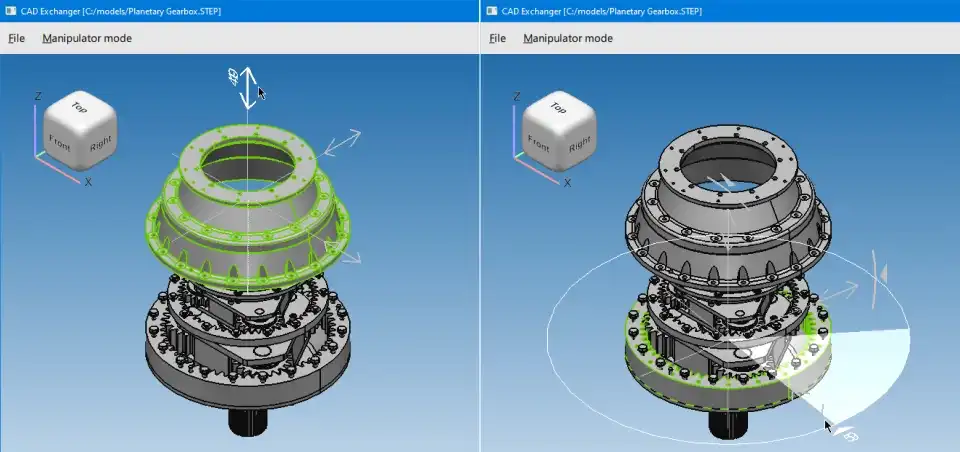
Visualization toolkit is CAD Exchanger SDK's addon that enables software developers to add high-quality CAD visualization to their Qt, WPF, or Windows Forms apps. In 3.10.1 it has gotten a few improvements that should positively impact usability. The scene node factory API was reworked - previously it only allowed the creation of sub-graphs, and now the creation of single scene nodes is also supported. This should simplify the workflows where a scene graph is edited on the fly or when a custom scene graph is needed. Aside from that, there were multiple fixes for hidden nodes.
Scene updates can now report progress. This is done via the usual CAD Exchanger progress status mechanism, which can accept observers and run arbitrary code on progress updates. This can be used to provide visual feedback and a better user experience when handling heavy scenes.
Manipulator, a tool that can be used to move or rotate objects on the scene, can now be set up programmatically to do only rotations or translations. This enables the client code to finely control which transformations apply to which objects.
----------------
Study the complete list of improvements in the CHANGES.txt file and work with 3D XML, ACIS, CATIA, DWG, and dozens of other formats to the best of their capacity.
With every new release, we endeavor to streamline collaboration in the multi-CAD world. If you are already a CAD Exchanger user, please feel free to share your feedback via the form.
By now existing customers should have received the notifications with the direct download links of the licensed products. If you didn’t receive the email please submit a request via this form and we will follow up shortly.